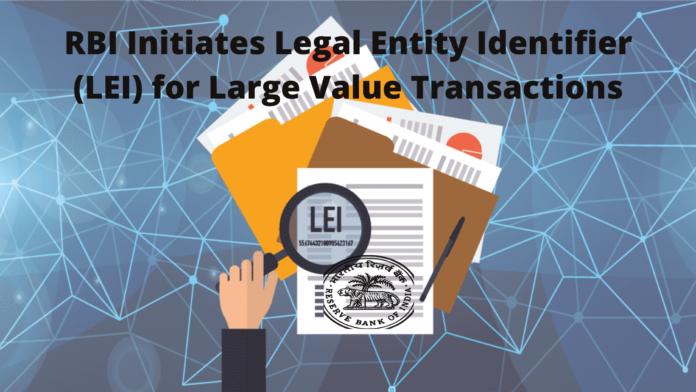The Reserve Bank of India (RBI) on January 05, 2021, released a circular introducing Legal Entity Identifier (LEI) for large value transactions in Centralised Payment Systems. These guidelines are issued under Section 10 (2) read with Section 18 of Payment and Settlement Systems Act, 2007 (Act 51 of 2007) and shall be effective from April 1, 2021.
What is a Legal Entity Identifier (LEI)?
The Legal Entity Identifier (LEI) is a 20 digit alpha-numeric code, which is used internationally to uniquely categorize financial transaction parties. It was introduced as a key initiative to improve the consistency and efficiency of financial data systems for better risk management after the Global Financial Crisis. Purpose of LEI:- The LEI system was introduced in response to the financial crisis and seeks to increase transparency in financial data systems. There are currently many methods of recognizing organizations in different markets and nations.
- RBI has introduced LEI in a phased manner for the participants in the over-the-counter (OTC) derivative and non-derivative markets, as well as for large corporate borrowers.
- advise entities who undertake large value transactions (₹50 crores and above) to obtain LEI in time, if they do not already have one;
- include remitter and beneficiary LEI information in RTGS and NEFT payment messages (details of identified fields in the messaging structures of RTGS and NEFT for the inclusion of LEI information are the Annex);
- maintain records of all transactions of ₹50 crores and above through RTGS and/or NEFT.



